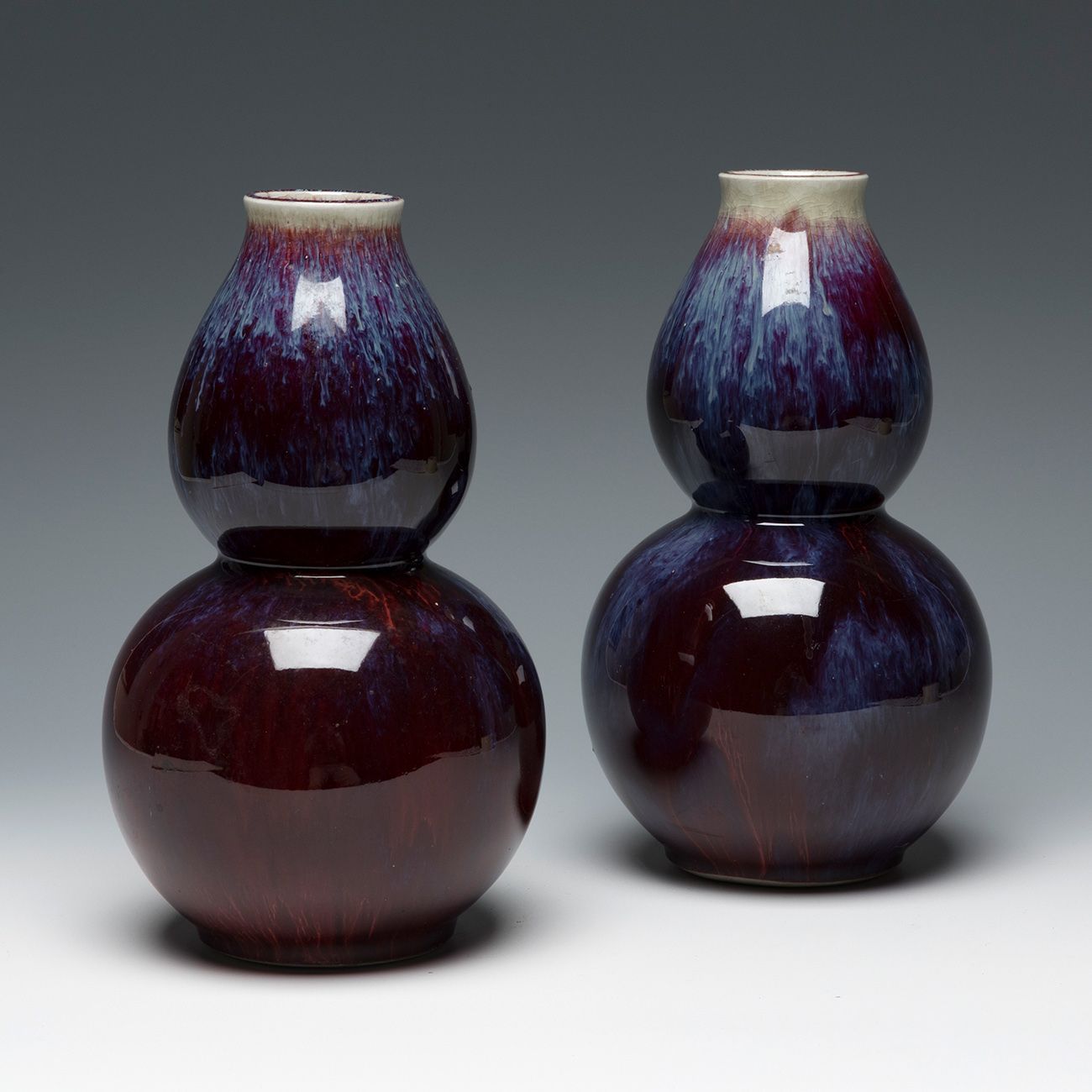Description
Pair of "sang de boeuf" double gourd vases, Qing dynasty. China, late 19th century. Hand-polychromed porcelain. Measurements: 23 cm (height); 13 cm (largest diameter). Pair of Qing dynasty "sang de boeuf" double gourd vases. China, late 19th century. In hand-polychromed porcelain with maroon and blue tones and white near the mouth. In China, the gourd or double gourd is a symbol of the unity of heaven and earth. The shape of the double gourd was derived from the gourd plant itself during the Southern Song dynasty. Gourds were thought to have mystical healing properties and were a symbol of fertility. They are also a Taoist emblem of immortality. Later, during the Kangxi period, examples of triple gourds were made.
30
Pair of "sang de boeuf" double gourd vases, Qing dynasty. China, late 19th century. Hand-polychromed porcelain. Measurements: 23 cm (height); 13 cm (largest diameter). Pair of Qing dynasty "sang de boeuf" double gourd vases. China, late 19th century. In hand-polychromed porcelain with maroon and blue tones and white near the mouth. In China, the gourd or double gourd is a symbol of the unity of heaven and earth. The shape of the double gourd was derived from the gourd plant itself during the Southern Song dynasty. Gourds were thought to have mystical healing properties and were a symbol of fertility. They are also a Taoist emblem of immortality. Later, during the Kangxi period, examples of triple gourds were made.
